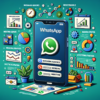A consequence of the aging population is the increase in the demand for health care; the burden on health care providers. At the same time, digital channels for the most part are becoming the preferred means of accessing data and services.
It is no secret that people are living longer and that globally the population is expanding. According to the most recent UN DESA report; the world population is expected to increase one billion times by 2025, at 300 million aged 65 or over.
Enabled by the availability of the communication platform as a service (CPaaS) that provides; messaging, voice and video via simple API integration, healthcare professionals are starting to respond; offering apps that provide routine medical services such as booking appointments. More and more often the video calls they are offered as a way to speed up the consultation process.
Bupa, for example, offers its clients video consultations with qualified doctors via an app.
Elsewhere, the UK's National Health Service (NHS) recently introduced a similar service; GP at Hand, an app that allows users to have appointments via video calls or text messages. This digital shift is effectively easing the burden on frontline health care providers. Our recent research looked into the role of video in this shift in more detail.
Research from our sister company Sinch found that video calling is already becoming part of the communications mix; with 67% of surveyed businesses using video often or sometimes, 69% of which was in the healthcare sector, but only 19% of surveyed healthcare professionals said they would likely adopt video calling in the next 24 months.
The report also indicates that there is an unsatisfied consumer demand for video consultation.
Respondents were asked which type of organization they would most prefer to interact with via a video call, health care was the best, with the 23% of consumers thinking it was a good idea - the next closest industry sector was banking to all. '8%.
The reasons for preferring a video call (for all industries) were mixed, but four response categories were almost equally popular, providing insight into why patients prefer video over other digital channels. The 38% said it would provide a more personal service, the 38% said it would save time, the 36% wanted to see facial expressions, the 37% said it would solve questions at the moment. These are all good reasons to see a doctor face to face, demonstrating how easily video could replace seeing a doctor in person.
There is also another important reason why video calls are well suited to healthcare provision. It is widely recognized that one in five consumers self-diagnose health problems via search engines, usually because they have not been able to get a doctor's appointment. The danger of misdiagnosis, lack of access to medical history, and the pitfalls of unverified information can obviously be disastrous. Our research indicates that patients prefer the accuracy of a professional diagnosis - the 45% said video calling would prevent them from self-diagnosing.




